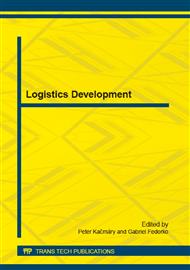p.228
p.233
p.239
p.245
p.251
p.257
p.263
p.271
p.276
Improving Accuracy of the Numerical Model Forecasting Commodity Prices
Abstract:
In mathematical models, for forecasting prices on commodity exchanges different mathematical methods are used. In the paper the numerical model based on the exponential approximation of commodity stock exchanges was derived. The price prognoses of aluminium on the London Metal Exchange were determined as numerical solution of the Cauchy initial problem for the 1st order ordinary differential equation. To make the numerical model more accurate the idea of the modification of the initial condition value by the stock exchange was realized. The derived numerical model was observed to determine the influence of the decreased size of the limiting value error causing the modification of the initial condition value by the chosen stock exchange on the accuracy of the obtained prognoses. The advantage of the chosen sizes of the limiting value error 7 % and 8 % within different movements of aluminium prices was studied.
Info:
Periodical:
Pages:
251-256
Citation:
Online since:
December 2014
Authors:
Price:
Сopyright:
© 2015 Trans Tech Publications Ltd. All Rights Reserved
Share:
Citation:


